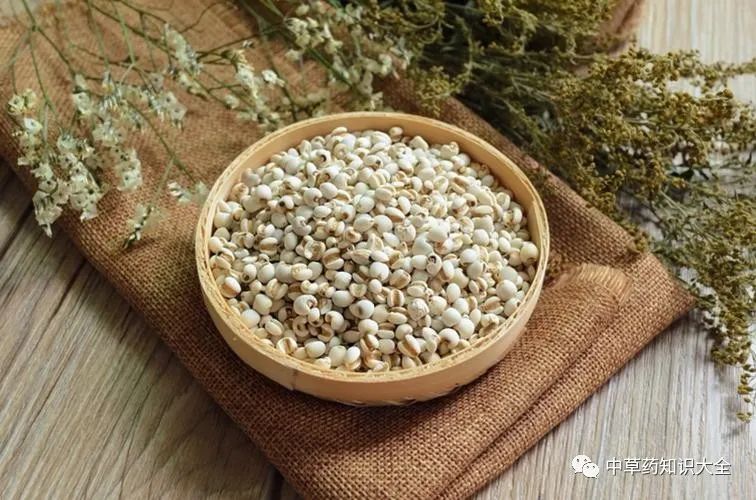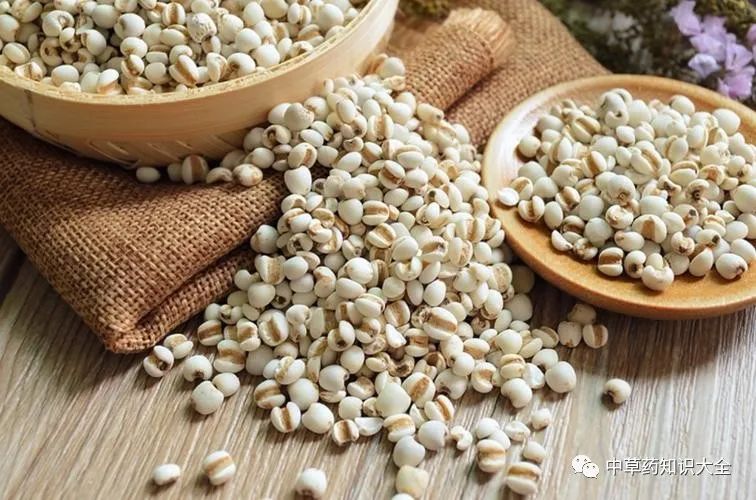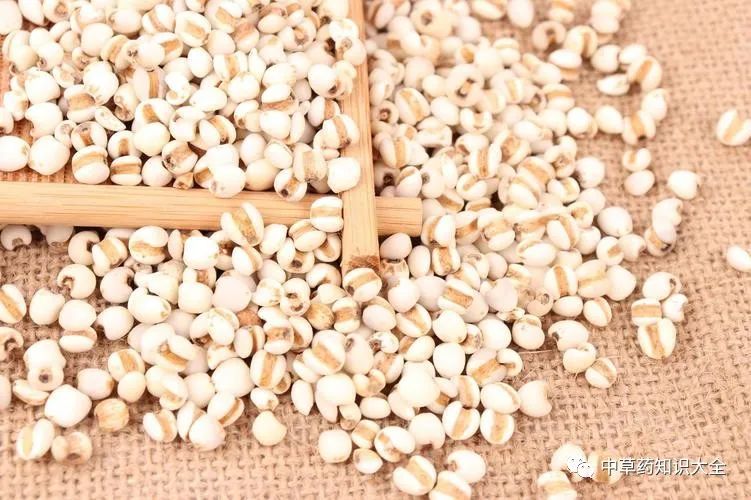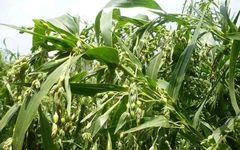It is said that during the Eastern Han Dynasty, General Ma Yuan fought in Jiaozhi (equivalent to most of Guangdong, Guangxi, and northern and central Vietnam). Due to the humid and hot climate of the southern mountains, which caused miasma to spread, Ma Yuan and his soldiers often consumed Coix Seed (Yi Yi Ren). After eating, the soldiers not only felt light but were also able to overcome the miasma.
Later, when Ma Yuan returned triumphantly after pacifying the southern regions, he brought back a cart of Coix Seed (Yi Yi Ren) as seeds for cultivation. However, this act was misused by some ill-intentioned individuals, who falsely accused him of plundering a large amount of jewelry from the people. To prove his innocence, Ma Yuan angrily dumped the entire cart of Coix Seed (Yi Yi Ren) into the Lijiang River, which immediately dispelled the rumors.
The local people loved this honest and selfless general, so they named the mountain by the Lijiang River “Fubo Mountain,” and Coix Seed (Yi Yi Ren) also gained the beautiful name “Yi Zhu Zi.”

Coix Seed (Yi Yi Ren) is also known as Yi Yi, Yi Mi, Yi Ren Mi, and Gou Zi Mi.
It is an annual or perennial herb. The fibrous roots are relatively thick, with a diameter of up to 3 mm. The stem is erect, 1 to 1.5 meters high, with about 10 nodes. The leaves are linear-lanceolate, up to 30 cm long and 1.5 to 3 cm wide, with rough edges and a thick midrib that is prominent on the back; the leaf sheath is smooth, with the upper part shorter than the internodes; the leaf tongue is hard, about 1 mm long. The racemose inflorescence is axillary; the female spikelets are located at the lower part of the inflorescence, surrounded by a hard, bead-like glume, which is about the same length as the spikelet; the first lemma of the fertile spikelet is membranous at the bottom and thick paper-like at the top, with a blunt tip; the second lemma is boat-shaped, enclosed within the first lemma, with a thick paper-like tip that gradually tapers; the second outer glume is shorter than the first outer glume; the inner glume is similar to the outer glume but smaller, with 3 stamens that are degenerate; the pistil has a long style; the sterile spikelet degenerates into a long cylindrical lemma. The male spikelets are often 2 to 3 in number at a node; the first lemma of the sessile male spikelet is flat, with both sides folded inward to form a ridge with uneven wings, with a blunt tip and numerous veins; the second lemma is boat-shaped and also has multiple veins; both the outer and inner glumes are thin and membranous; there are 3 stamens; the pedicellate male spikelet is similar to the sessile one but smaller or more degenerate. The caryopsis is enclosed in a hard glume, oval or oval-shaped. The flowering period is from July to September, and the fruiting period is from September to October. In autumn, after the fruit matures, the whole plant is cut, dried, and the fruits are threshed, removing the outer shell and yellow-brown skin, cleaning impurities, and collecting the seeds, which are then dried.
 The dried seeds are round or oval-shaped, with a wider and slightly flat base, a blunt round tip, measuring 5 to 7 mm in length and about 3 to 5 mm in width. The surface is white or yellowish-white, smooth or with indistinct longitudinal stripes, sometimes retaining a yellow-brown outer skin, with one deep and wide longitudinal groove on the side, the bottom of the groove is rough and brown, and the base is concave, with a small brown dot inside. The texture is hard, and when broken, the inside is white and powdery. It has a slight aroma and a sweet, bland taste. The best quality is characterized by large, plump, white, and intact grains.
The dried seeds are round or oval-shaped, with a wider and slightly flat base, a blunt round tip, measuring 5 to 7 mm in length and about 3 to 5 mm in width. The surface is white or yellowish-white, smooth or with indistinct longitudinal stripes, sometimes retaining a yellow-brown outer skin, with one deep and wide longitudinal groove on the side, the bottom of the groove is rough and brown, and the base is concave, with a small brown dot inside. The texture is hard, and when broken, the inside is white and powdery. It has a slight aroma and a sweet, bland taste. The best quality is characterized by large, plump, white, and intact grains.
Preparation: Roasted Coix Seed (Yi Yi Ren): Take cleaned Coix Seed (Yi Yi Ren) and roast in a pot over low heat until slightly yellow, then remove and let cool. Alternatively, it can be roasted with bran (for every 100 jin of Coix Seed (Yi Yi Ren), use 10 jin of bran); according to the “Treatise on the Preparation of Medicinal Materials”: For every 1 liang of Coix Seed (Yi Yi Ren), use glutinous rice. If boiled with salty soup, it is a different preparation.
Meridians: Spleen; Lung; Kidney
Properties: Sweet; Bland; Slightly Cold
Precautions: This product has a mild effect and should be taken in larger quantities over a longer period. Those with spleen deficiency and no dampness, as well as pregnant women, should use it with caution.
Functions and Indications: Promotes diuresis and strengthens the spleen; relaxes tendons and alleviates pain; clears heat and drains pus. It is indicated for edema; beriberi; painful urination; damp-heat diseases; diarrhea and leukorrhea; rheumatic pain; muscle spasms; lung abscess; intestinal abscess; flat warts.
Dosage: For internal use: decoction, 10-30g; or in pills, powders, soaked in wine, cooked in porridge, or made into soup.
 In Japan, Coix Seed (Yi Yi Ren) is regarded as a typical “anti-cancer food,” but in China, many people rarely consume it due to a lack of understanding of its efficacy and functions. In fact, Coix Seed (Yi Yi Ren) not only has significant anti-cancer effects but also strengthens the spleen, nourishes the lungs, clears heat, and promotes diuresis, making it a natural beauty food. So what are the specific effects and functions of roasted Coix Seed (Yi Yi Ren)?
In Japan, Coix Seed (Yi Yi Ren) is regarded as a typical “anti-cancer food,” but in China, many people rarely consume it due to a lack of understanding of its efficacy and functions. In fact, Coix Seed (Yi Yi Ren) not only has significant anti-cancer effects but also strengthens the spleen, nourishes the lungs, clears heat, and promotes diuresis, making it a natural beauty food. So what are the specific effects and functions of roasted Coix Seed (Yi Yi Ren)?
The effects and functions of Coix Seed (Yi Yi Ren)
Modern research shows that Coix Seed (Yi Yi Ren) contains starch, sugars, proteins, fats, amino acids, adenosine, and trace elements. Active components include Coix Seed (Yi Yi Ren) ester and Coix Seed (Yi Yi Ren) polysaccharides. Animal experiments have demonstrated that Coix Seed (Yi Yi Ren) has certain effects in lowering blood pressure, lowering blood sugar, anti-aging, anti-tumor, anti-viral, anti-inflammatory, and enhancing the body’s immunity. These effects may be the mechanism by which Coix Seed (Yi Yi Ren) promotes beauty and combats skin aging.
Coix Seed (Yi Yi Ren) is a type of grain that can be boiled or roasted. Roasting Coix Seed (Yi Yi Ren) is more beneficial for gastrointestinal absorption, and roasted Coix Seed (Yi Yi Ren) is neutral to slightly warm, with a stronger spleen-strengthening effect than raw Coix Seed (Yi Yi Ren), but its diuretic function is not as strong as that of the raw form, which is more effective for clearing heat and draining pus, often used for abscesses.

Selected Formulas:
1. For patients with body aches, fever, and severe symptoms in the afternoon, known as rheumatism, this condition is caused by sweating in the wind or prolonged exposure to cold: Ma Huang (Ephedra, remove nodes) 0.5 liang (soaked in soup), Gan Cao (Licorice) 1 liang (roasted), Coix Seed (Yi Yi Ren) 0.5 liang, Xing Ren (Apricot Kernel) 10 pieces (peeled and roasted). Grind the ingredients to a powder, take 4 qian, boil with 1.5 cups of water until reduced to 8 parts, strain and take warm, avoiding wind. (From “Essentials of the Golden Chamber” Ma Huang Xing Ren Yi Yi Gan Cao Decoction)
2. For rheumatic pain, weakness in limbs, and soreness in the waist and spine: Coix Seed (Yi Yi Ren) 1 jin, True Mulberry (Sang Ji Sheng), Dang Gui (Angelica), Chuan Xiong (Szechuan Lovage), Cang Zhu (Atractylodes) (soaked in rice wash and roasted) each 4 liang. Divide into 16 doses, decoct in water. (From “Guang Ji Fang”)
3. For chronic rheumatism, tonifying Qi, benefiting the intestines and stomach, reducing edema, and eliminating evil Qi from the chest, treating muscle spasms: Grind Coix Seed (Yi Yi Ren) into powder, cook with polished rice to make porridge, and eat daily. (From “Compendium of Materia Medica” Coix Seed (Yi Yi Ren) Porridge)
4. To dispel rheumatism, strengthen bones and muscles, and benefit the spleen and stomach: Coix Seed (Yi Yi Ren) powder, brew with fermented rice, or brew in a bag and drink. (From “Compendium of Materia Medica” Coix Seed (Yi Yi Ren) Wine)
5. For edema and shortness of breath: Yuli Ren (Prunus Yuyuan) 2 liang. Grind, filter with water, and cook Coix Seed (Yi Yi Ren) rice, eat twice a day. (From “Du Xing Fang”)
6. For lung atrophy with purulent blood: Coix Seed (Yi Yi Ren) 10 liang. Crush, boil with 3 sheng of water until reduced to 1 sheng, add a little wine and take. (From “Mei Shi Ji Yan Fang”)
7. For lung abscess with cough and blood sputum, and chest discomfort: Boil Coix Seed (Yi Yi Ren) in strong bitter wine until concentrated, take warm. If there is blood in the lungs, it should be expelled. (From “Fan Wang Fang”)
8. For lung abscess with hemoptysis: Coix Seed (Yi Yi Ren) 3 taels. Mash, add 2 large cups of water, and a little wine, divide into two doses. (From “Ji Sheng Fang”)
9. For intestinal abscess, with discomfort in the body, tight abdomen, pressing it feels swollen, no accumulation in the abdomen, no fever, and rapid pulse, indicating pus in the intestines: Coix Seed (Yi Yi Ren) 10 fen, Fu Zi (Aconite) 2 fen, Bai Jiang Cao (Patrinia) 5 fen. Grind these three ingredients into powder, take a tablespoon with 2 sheng of water, boil down to half, take at once, and urinate. (From “Essentials of the Golden Chamber” Coix Seed (Yi Yi Ren) Fu Zi Bai Jiang San)
10. For intestinal abscess: Coix Seed (Yi Yi Ren) 1 sheng, Mu Dan Pi (Moutan Root), Peach Kernel each 3 liang, Gua Ban Ren (Trichosanthes) 2 sheng. Combine these four ingredients, boil with 6 sheng of water to obtain 2 sheng, divide into two doses. (From “Qian Jin Fang”)
WeChat has been updated! If youneither★starred me, nor liked or

